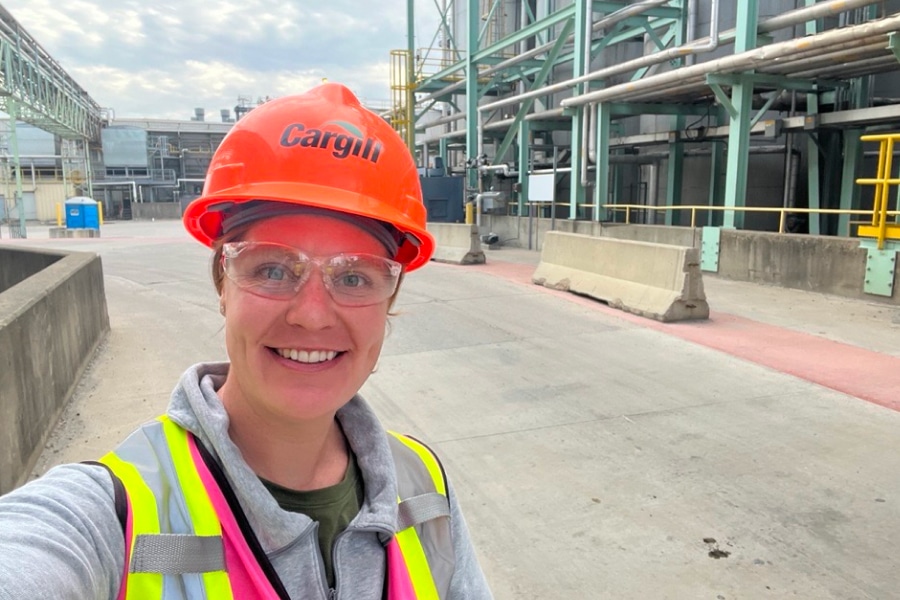The rising cost of housing is a concern for many young people around the world, and New Zealand-based architect William Samuels and his partner are no exception. Looking for a starter home, the duo was faced with a national cost-of-living crisis that seemed to make their dreams unattainable—until they came up with a creative solution.
Built spoke to Samuels about the compact, relocatable and eco-friendly studio home system he designed and built on a slim $150,000 New Zealand budget, and how taking a creative approach to building living spaces can help make homeownership more widely achievable.
A modern approach to the starter home
Samuels and his partner came up with the idea of studio houses while brainstorming more accessible pathways to the traditional starter home. “We were interested in the idea of alternative approaches to housing, and in particular alternative paths to homeownership,” he said. “Housing in New Zealand is extremely expensive, and there’s a lack of supply, which is exacerbating a national housing crisis.”
The country’s property bubble is one of the most significant economic and political issues facing the nation, and Samuels knew he needed to be creative if he was going to find a way to own his own home. This approach allowed him to do things a little differently.
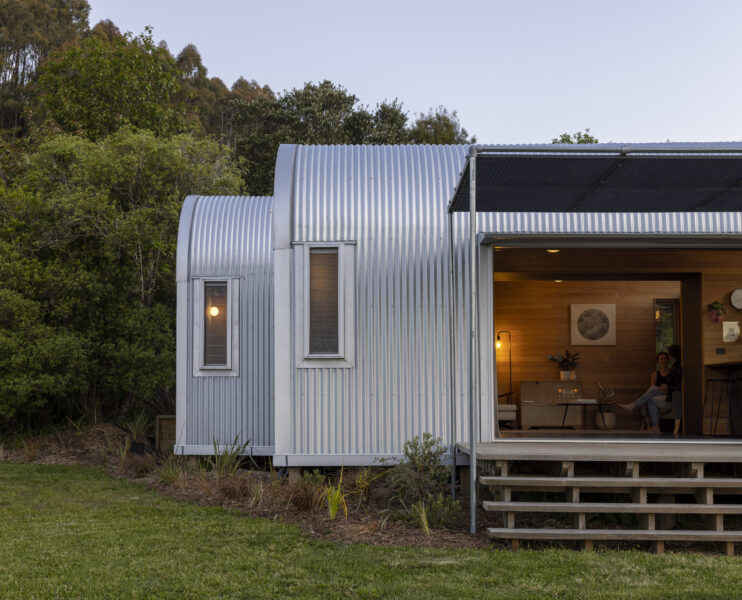
“We wanted to consider how to live in a manner that was sustainable, had high levels of amenity yet is also affordable,” he said. “The studio house is a response to that, and was based on three key principles to achieve the affordability requirements: build small, build on leasehold land and build ourselves.”
Samuels and his partner decided to take the additional step of completing the construction process for their home themselves, even though neither is a construction professional.
“Undertaking the construction process ourselves was difficult as we have limited building experience,” he said. “However, that is part of the value of this process as it enabled us to learn a lot about construction and building techniques, which we are now applying to our work. It also enabled us to experiment during the construction process with different types of details, construction methods and materials.”
This hands-on approach meant the project had to be both practical and personal, Samuels explained.
“The studio house is reasonably bespoke and is an experimental exploration into the nature of ‘home,’” he said. “The value that we feel it brings is that it raises some questions about what we value in our homes and that it questions standard approaches to homeownership, such as through the use of leasehold land. Our hope is that this may encourage others to explore different approaches and models of housing and find ways to live that are in keeping with their particular needs and desires, rather than resorting to a standard housing model.”
Minimal footprint, maximum impact
Getting their house completed under budget meant the couple had to be creative in their approach to construction, but it also required them to be flexible when it came to the definition of ownership. To keep the project affordable, Samuels and his partner needed to build on leased, rather than owned, land.
“Building on leasehold land was a key driver for achieving an affordable home, but it also was significant in that it defined the design parameters for the home,” Samuels said. “Being on leasehold land meant that the house needs to be relocatable, enabling it to move locations if the lease ever runs out, or if we want to purchase land elsewhere in the future and take the house with us. That defined the physical constraints as it needs to be able to fit on the back of a truck.”
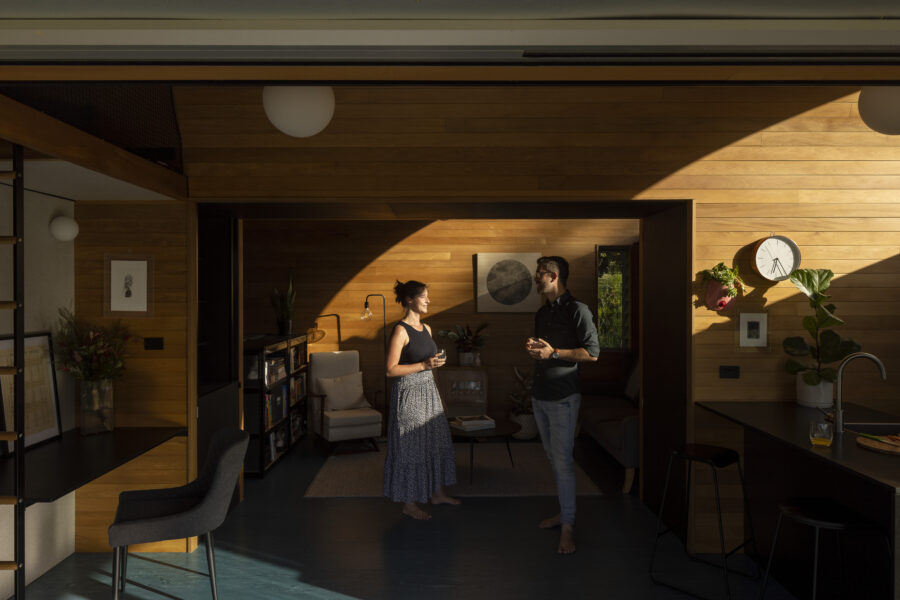
The need to create a movable home inspired the duo to take a modular approach to construction. “We used two conjoined modules to give additional space, with the option of adding a third later,” Samuels said. “The use of the curved barrel vaulted ceiling was to create more volume within the space through added height, but to do so in a manner that felt gentle and considered.”
But this isn’t any ordinary mobile home.
“We used timber and natural materials wherever possible to give warmth and comfort to the space,” Samuels explained. “Smaller, intimate spaces such as the loft over the bathroom creates comfortable breakout areas, which have a different spatial quality to the rest of the home. We also created a series of ‘shared volumes,’ where each space such as the living area, bedroom and study are all clearly defined individual areas, but they share volume with the other spaces to create the feeling of a much larger space.”
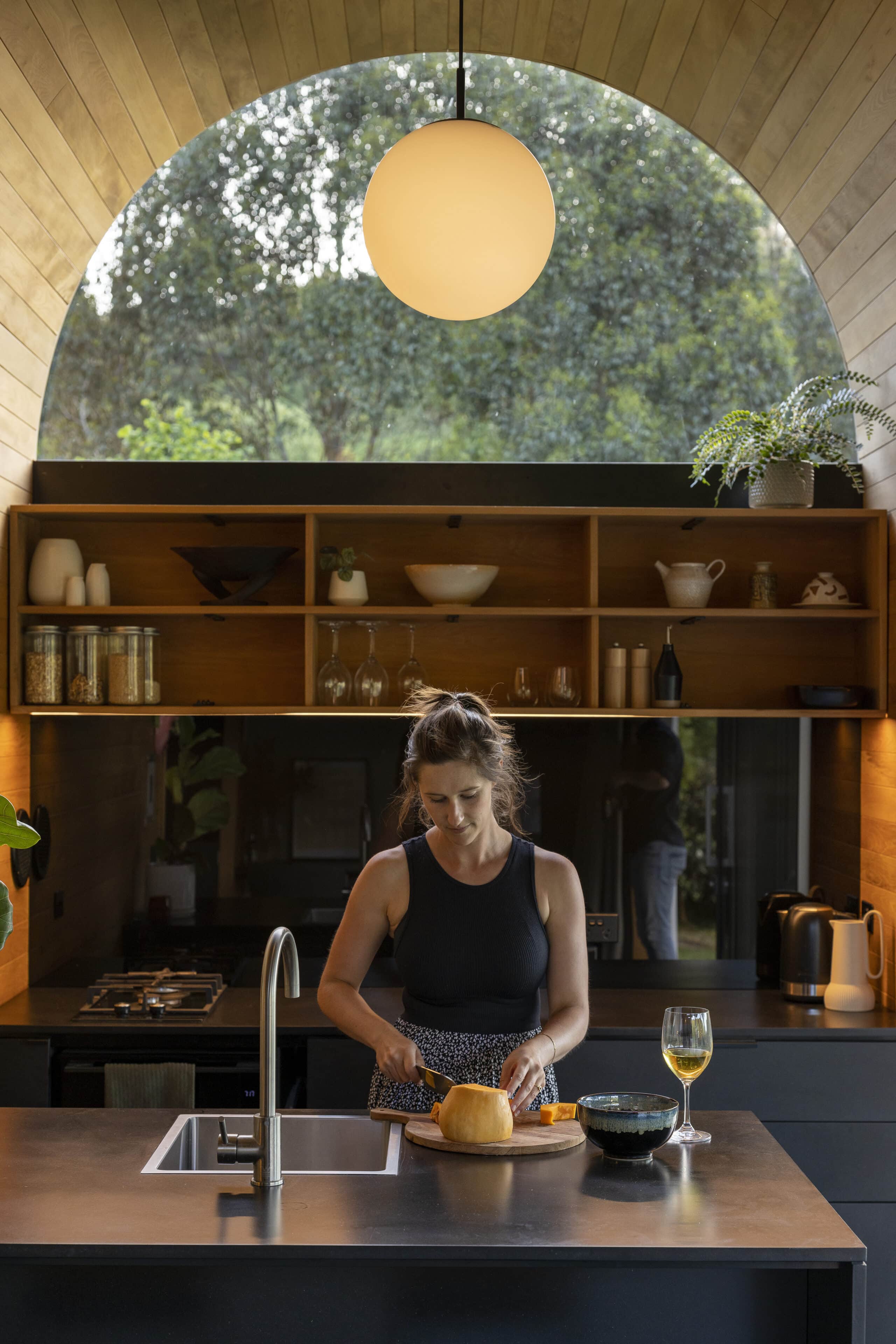
This creative use of shared space was made possible by a unique radiant footprint. “Rooms are created as a series of interconnected nooks that pinwheel off a much larger central shared space,” Samuels said. “This allows each room to feel independent while also sharing volume with the other rooms. We have the option of adding a third module to the house, which would create a second of these larger central shared spaces.”
A new way to move house
Samuels and his partner had to keep mobility in mind as they created the studio house, which led to them seeking some unlikely sources of inspiration.
“Some of the design inspiration came from tiny homes on wheels, which disconnect the house value from the land value,” he said, “and there is a lot of thought that goes into the spatial efficiency of those homes. However, we felt that the tiny house typology was too small for our needs and required compromising too much on the livability aspects that were so important to us. So we have taken some of those ideas and adapted them to suit our particular needs.”
One of the ideas Samuels took from tiny homes: the idea of an alternate material basis of the structure.
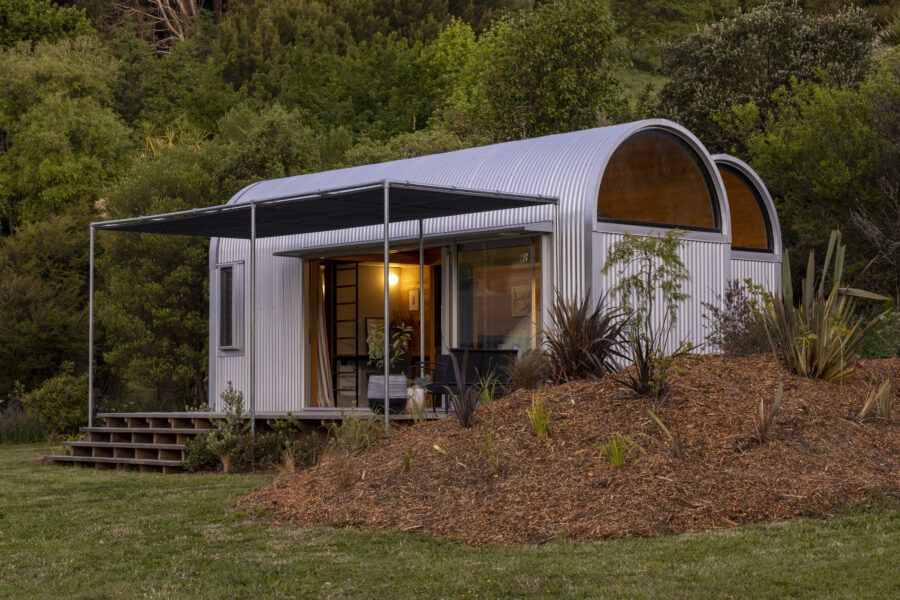
“We used steel framing rather than timber to reduce the overall weight of the house to make it easier to move,” he explained. “The two modules are bolted together so if we ever decide to move the house it would be relatively straightforward to disconnect everything and unbolt the house from the foundations. The use of natural materials came from a personal interest in the aesthetic properties, as well as a desire to be considering sustainable design principles in the construction process.”
Although Samuels said he doesn’t currently have any plans to replicate the studio house, he hopes the project will continue to serve as a source of inspiration.
“We are undertaking a number of projects at the moment where we’re able to apply the lessons that we learned from the studio house, such as building small, beautiful spaces and innovating housing approaches,” he said. “We’re also exploring ways that the design of the studio house could be refined into something that is easily replicable and could be applied into other locations.”



